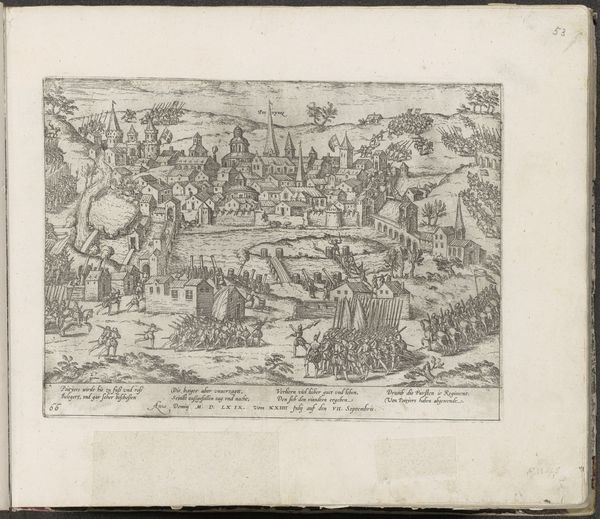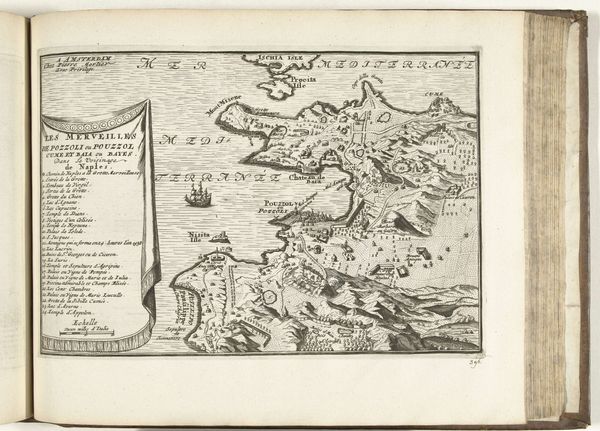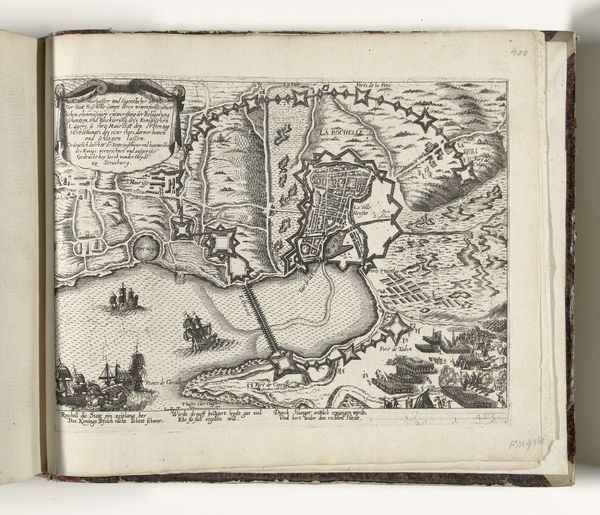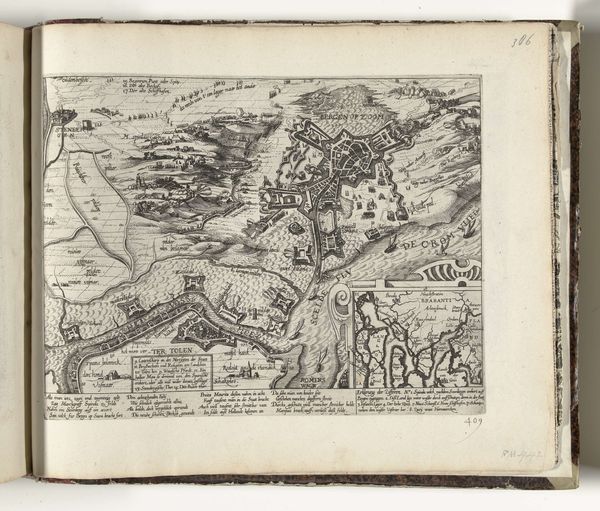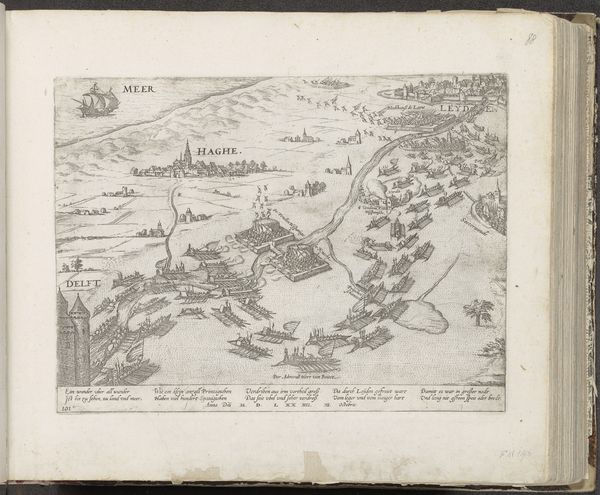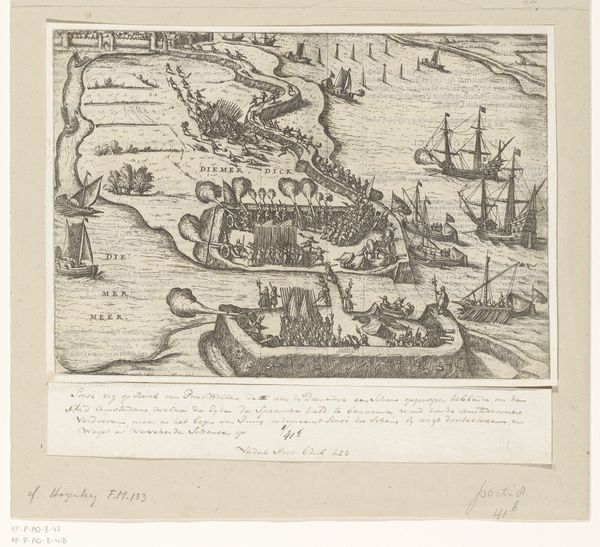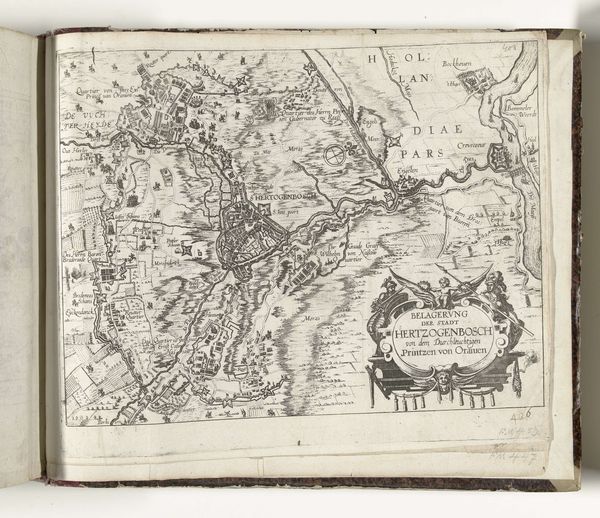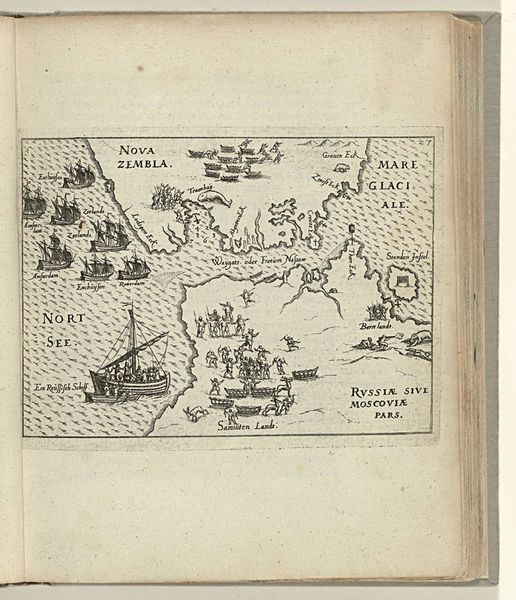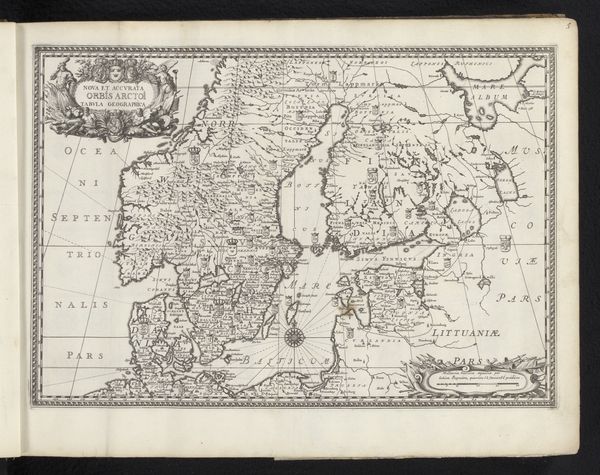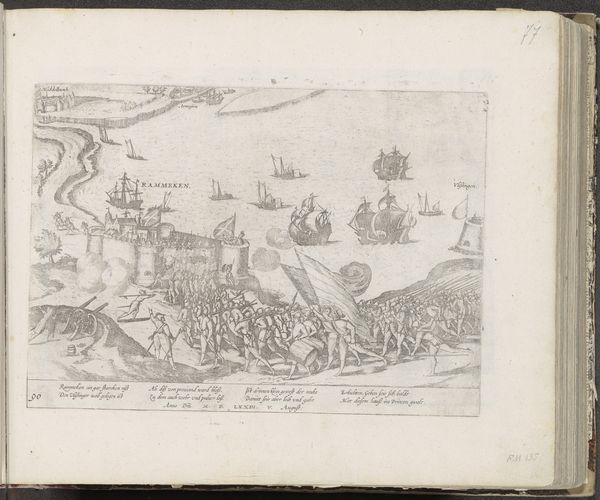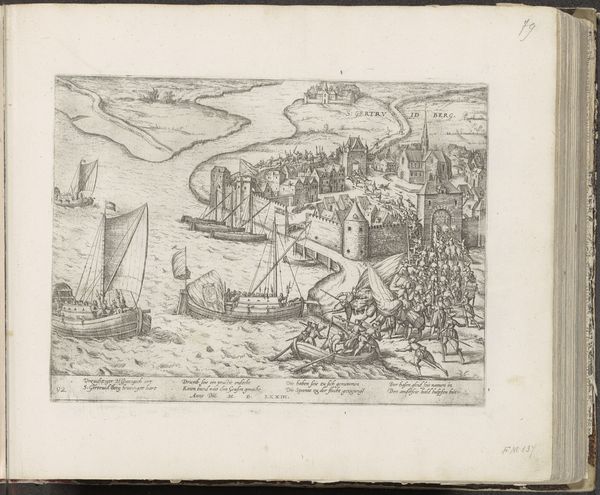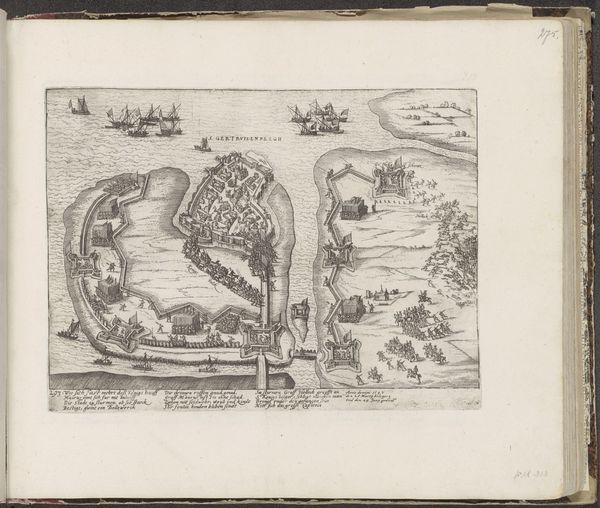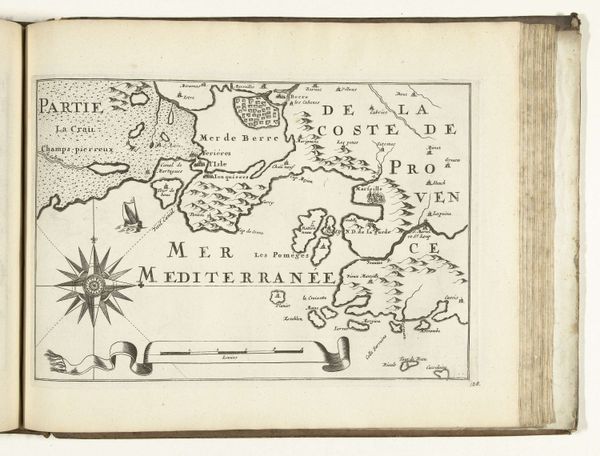
Inname van Larache in Marokko door de Spanjaarden, 1610 1610 - 1612
0:00
0:00
drawing, print, engraving
#
drawing
#
pen drawing
# print
#
pen sketch
#
sketch book
#
landscape
#
personal sketchbook
#
ink drawing experimentation
#
ancient-mediterranean
#
pen-ink sketch
#
pen work
#
sketchbook drawing
#
cityscape
#
storyboard and sketchbook work
#
sketchbook art
#
engraving
Dimensions: height 224 mm, width 282 mm
Copyright: Rijks Museum: Open Domain
Curator: Here we have "Inname van Larache in Marokko door de Spanjaarden, 1610" by Frans Hogenberg. This piece, created between 1610 and 1612, captures the Spanish capture of Larache, Morocco, using drawing and engraving techniques. It's currently held in the Rijksmuseum's collection. Editor: My initial impression is one of intense detail and spatial awareness, all rendered in this monochromatic medium. You can see the deployment of resources; ships massing in the harbor contrasted against the fortress, seemingly impregnable in the top right. It feels almost like a meticulously constructed diorama. Curator: Exactly. Hogenberg’s use of printmaking is fascinating here. The etching, the drawing – these were reproducible, easily disseminated. So the fall of Larache ceases to be just an isolated military event, but becomes a circulated piece of political imagery, contributing to Spain's self-representation. Consider how a piece like this helped cement Spanish power through the literal multiplication of its image. Editor: It strikes me too, how the very process – the making of the print itself – reflects the act it depicts: a taking. Larache is rendered into copper or wood, subjugated to the artist's vision, the printing press and the consumption by whoever views it after the press. The material is instrumental in the act of dominion. Curator: Indeed. The map format itself reinforces this. These weren't just pretty pictures; they informed strategic decisions, justified colonial ventures. Notice the heraldic crest at the upper right; that would be immediately recognizable as reinforcing whose power structure benefits from the conflict at hand. Editor: It begs the question, who was the intended audience for this? How was it distributed, and how did that distribution contribute to a sense of shared identity or national project? Was it part of larger atlases sold widely to a growing educated public, and used by officials and interested people who craved news and historical factoids? It raises interesting considerations about access and consumption. Curator: Ultimately, this engraving presents a complex interplay between artistic skill, material production, and the social and political forces that shaped early 17th century Europe and its relationship with North Africa. Editor: A seemingly simple image, it truly unearths multiple layers. We started with its immediate impression, dived into its implications of the historical moment, and understood a little more about that time.
Comments
No comments
Be the first to comment and join the conversation on the ultimate creative platform.
